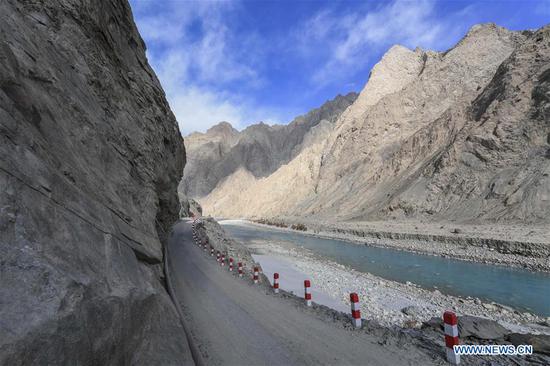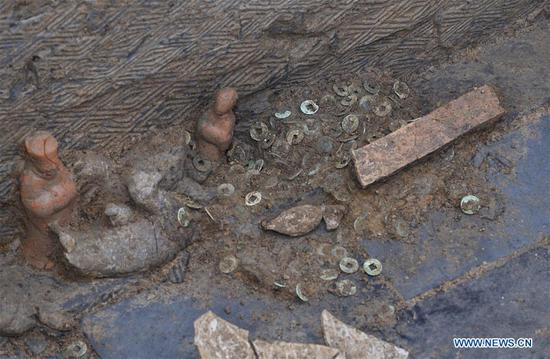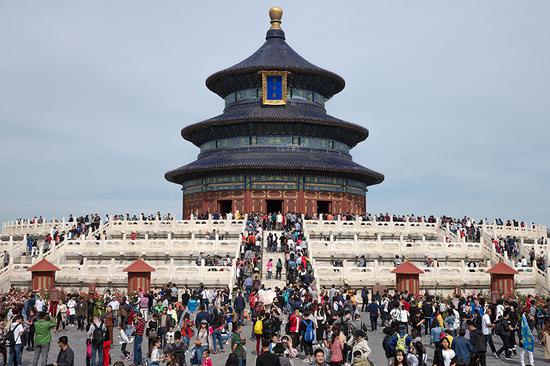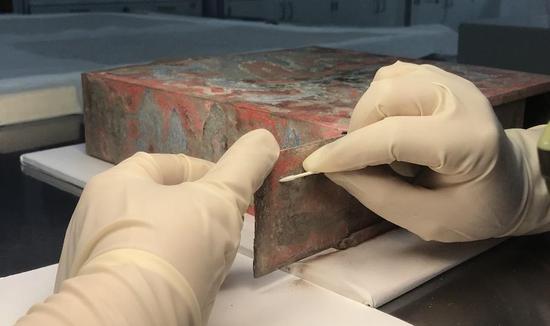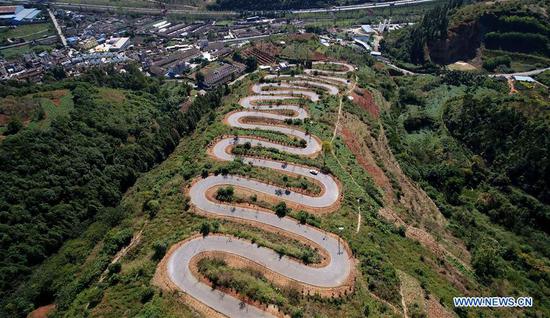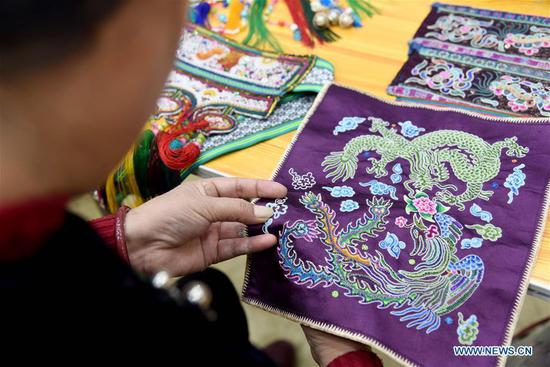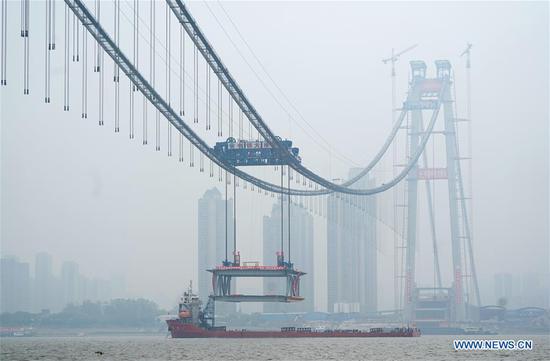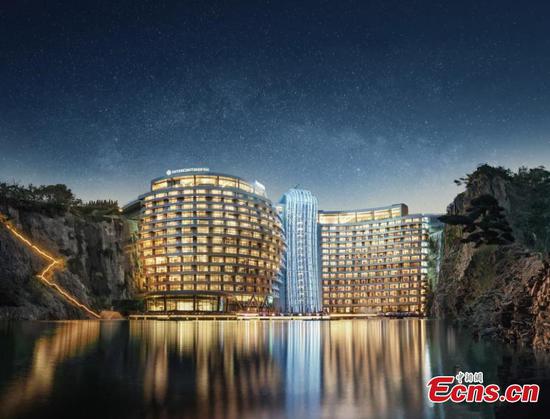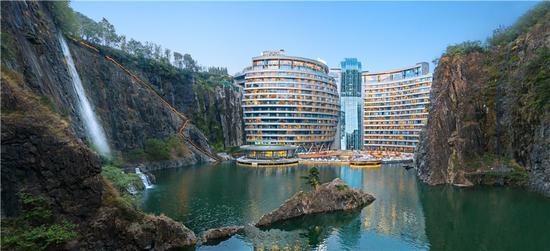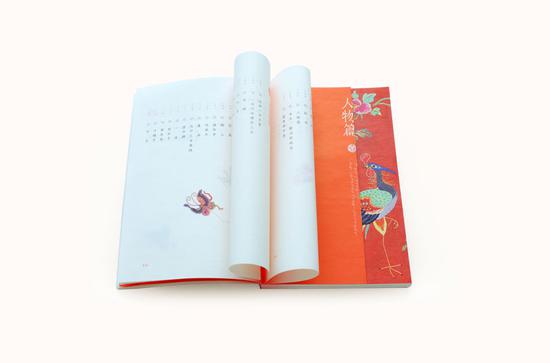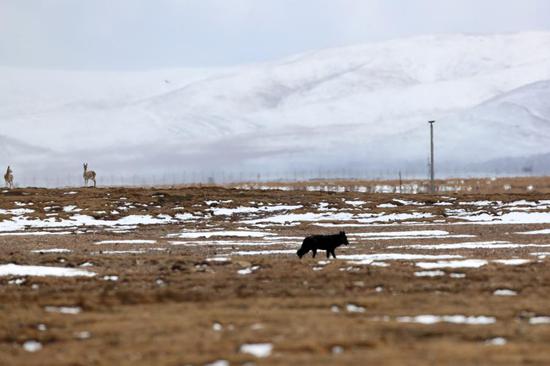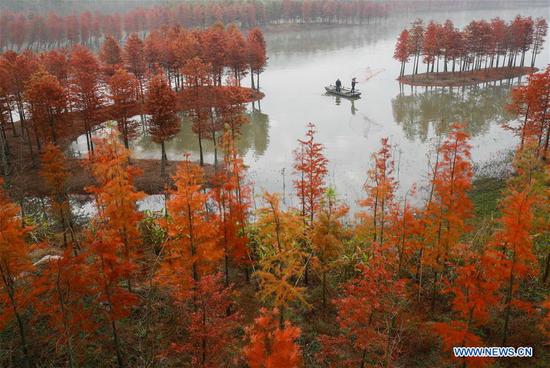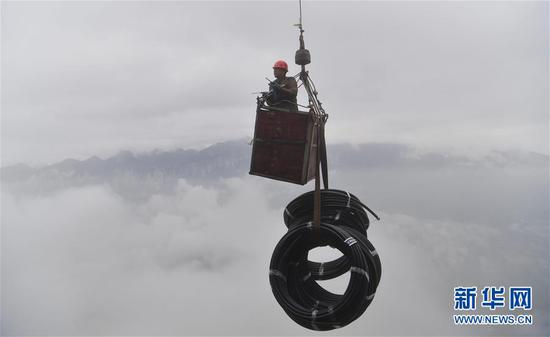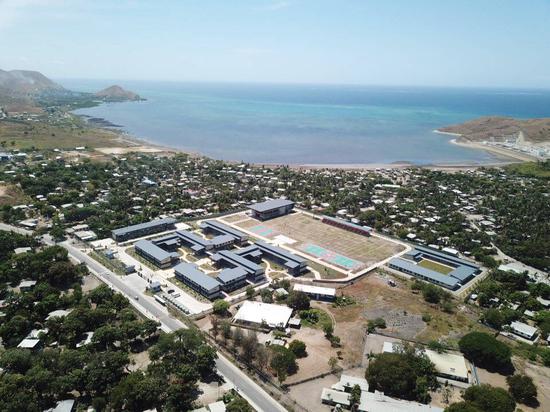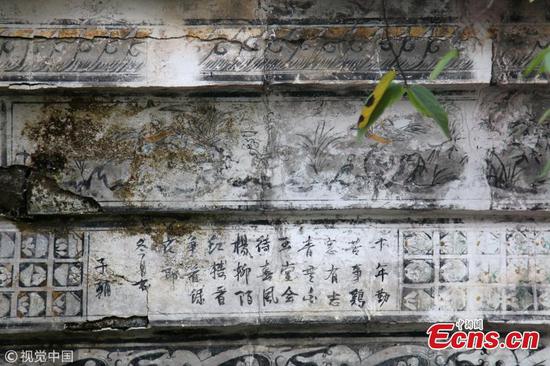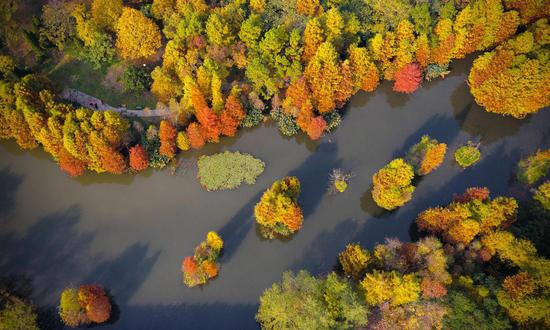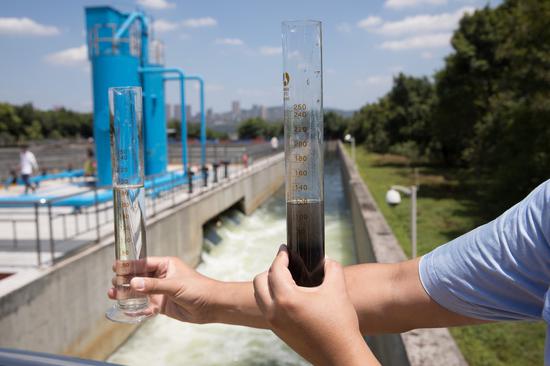
A worker compares differences in water quality at a sewage treatment plant in Chongqing.(Xinhua)
Joint declaration
Wan Chengyan, a researcher with the Ministry of Water Resources on water projects and ecology, said the main problem facing the Yangtze is the "obstruction of dams and fragmentation of the biological environment".
Aquatic species in the river and its tributaries have been separated by the dams, and some cannot spawn at their original sites. Although some species have been forced to find new sites, their breeding scale is quite limited.
Wan said the large number of dams built along the Jinsha River (the name for the upper reaches of the Yangtze) and its tributaries has downgraded the water ecology, and many types of fish that require a certain area of running water to spawn in cannot survive.
"The dams have not only changed the original state of the river, but also delayed change in the water temperature immediately downstream from the dams. Both factors directly affect fish spawning," Wan said.
According to experts, the artificial separation of lakes and rivers along the waterway is also contributing to the ecological downgrading.
Governments at various levels have realized the urgency of the issue. At a conference in Wuhan, Central China's Hubei province, on Nov 3, five ministries and 15 provincial-level regions jointly issued a declaration on the river's ecological protection.
At the conference, Minister of Agriculture and Rural Affairs Han Changfu vowed to "resolutely reverse the ecological recession trend and provide powerful support to the protection and ecological restoration of the mother river".
Thousands of fishermen have lived on their boats on the Yangtze for generations. But now the government needs to create new jobs for them on land, due to depletion of the fish population.
According to Chen, 34.14 million fries of rare fish species, including the Chinese sturgeon and common sucker fish, and 12.93 billion fries of the black, grass, silver and bighead carp were introduced to the Yangtze from 2015 to 2017, playing an important role in maintaining and boosting the fish population.
But Cao said it is almost impossible for the river's ecology to recover as a whole.
"However, it is still possible to restore the ecology in some tributaries where endemic fish live," he said.
The Chishui River, a 436-km-long first-class tributary of the Yangtze, is one of the few rivers of such scale where a big dam has not been built.
"It flows naturally, boasts a complete and healthy water ecology system and is home to a great variety of aquatic organisms," Cao said.
Experts think the Chishui River is an example of the possibility of achieving balanced development.
Chishui city, Guizhou province, which is named after the river, has not only moved its limited number of industries to an industrial park to collectively process their waste, it has also helped farmers to select more-profitable environmentally friendly plants to reduce the effects of the use of pesticides and chemical fertilizers on the environment.
Xie Yuanchi, the deputy mayor of Chishui, told the media that the farmers - some of whom still live a hand-to-mouth existence - are encouraged to plant dendrobium stem (a kind of herb), bamboo and nursery-grown plants and raise fish and chickens.
Last year, the ecological farm industry and environmentally friendly industries contributed 75 percent of the city's GDP, proving that backward inland regions can overcome their reliance on polluting industries to boost economic growth and strike a balance between social, economic and ecological needs.
Xie said the well-protected environment now attracts tourists from across the country, who made 16.35 million trips to the city last year, nearly four times the number four years ago.

















